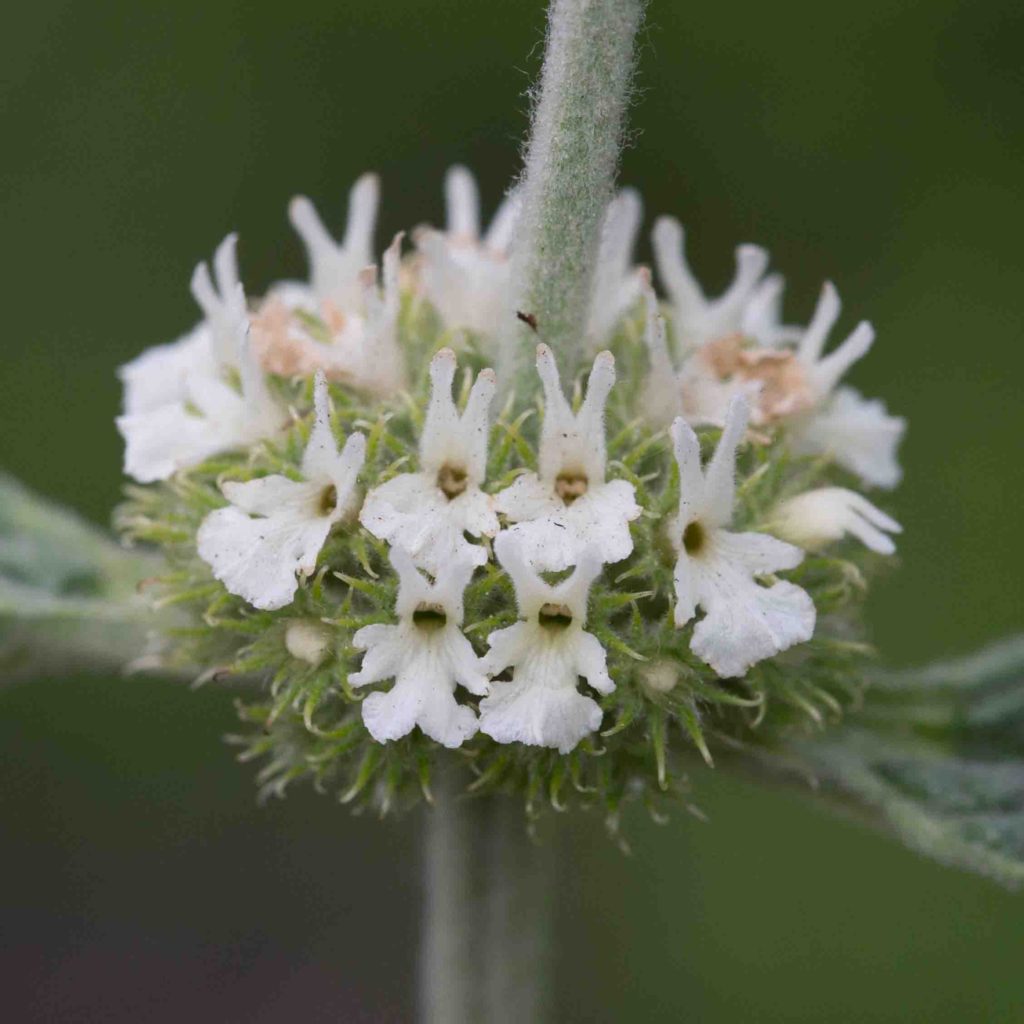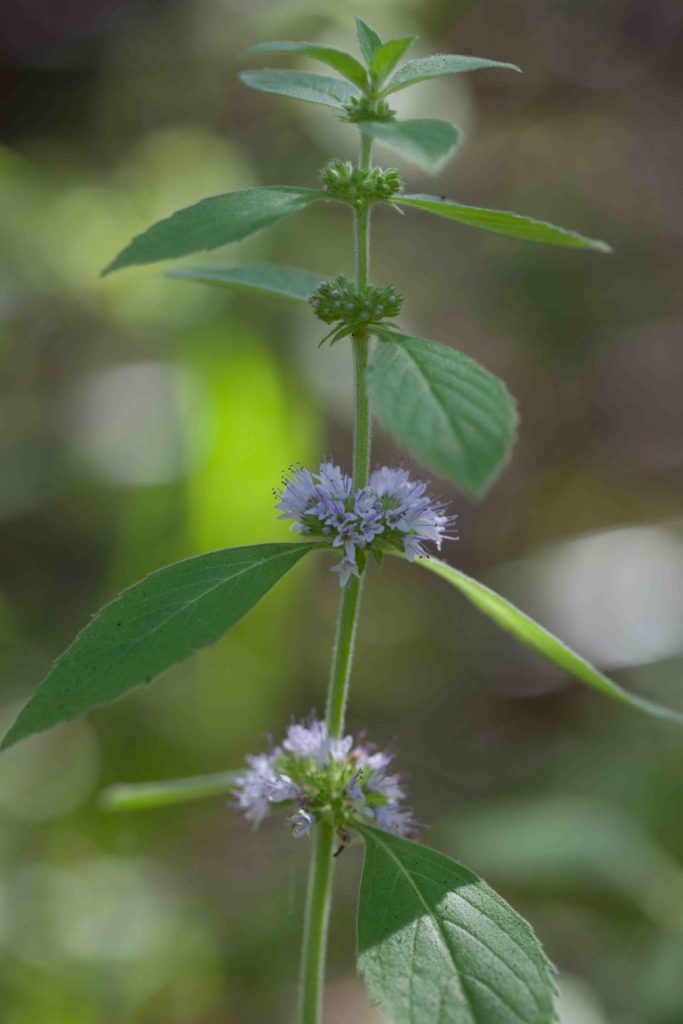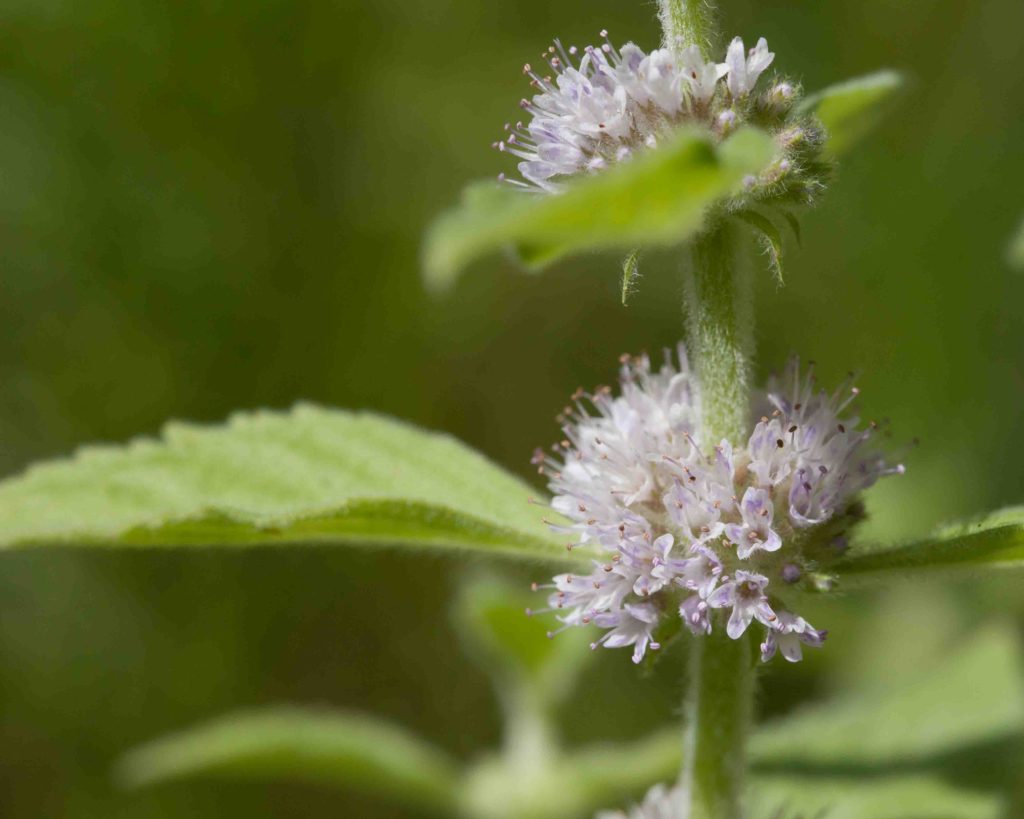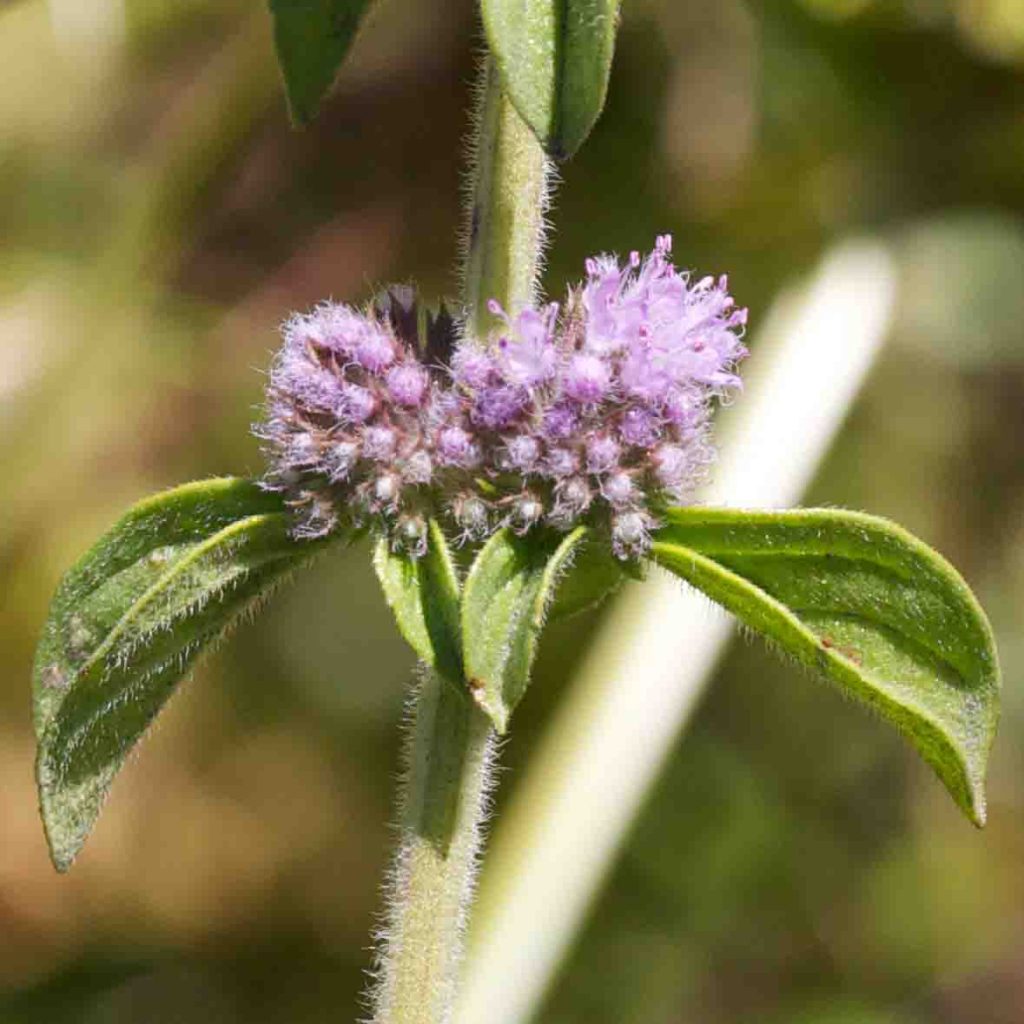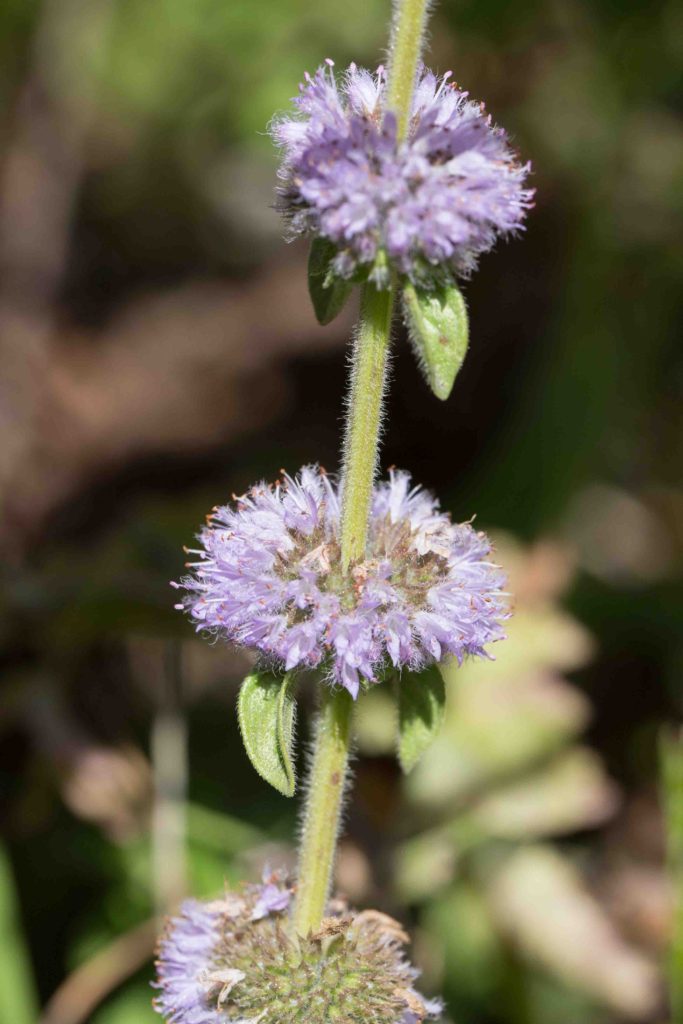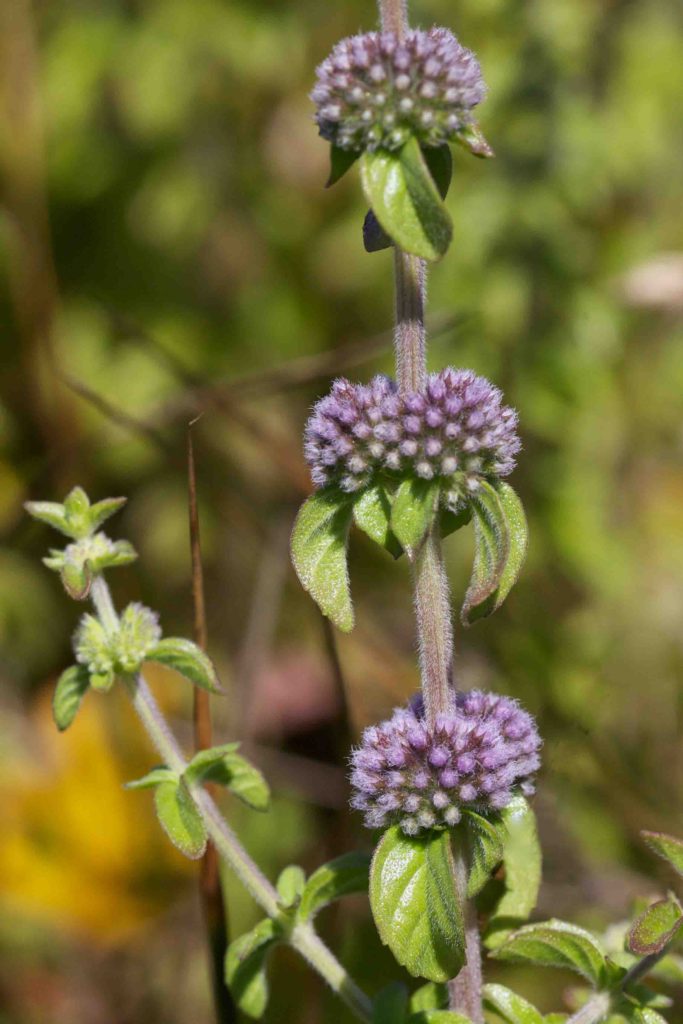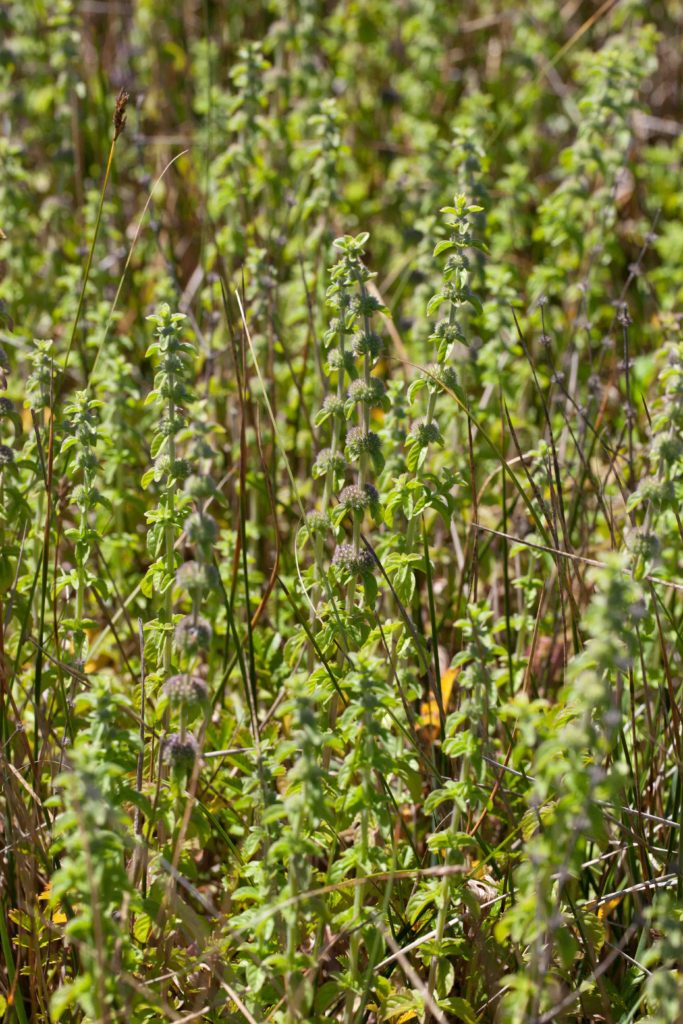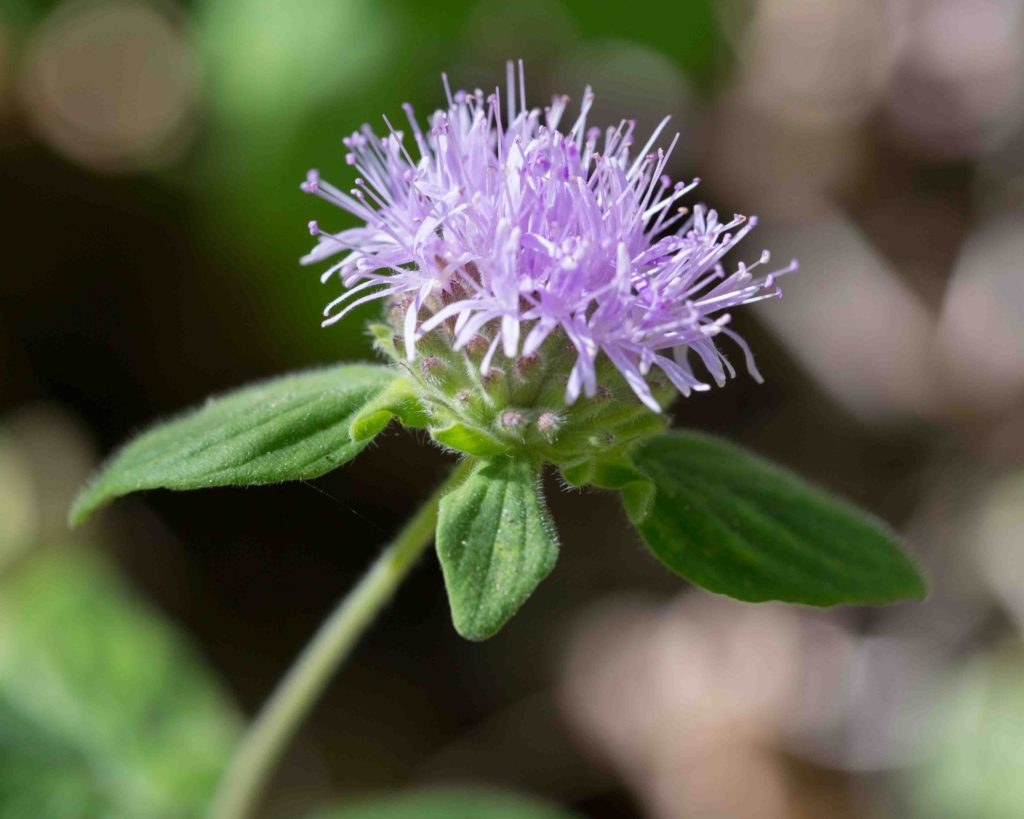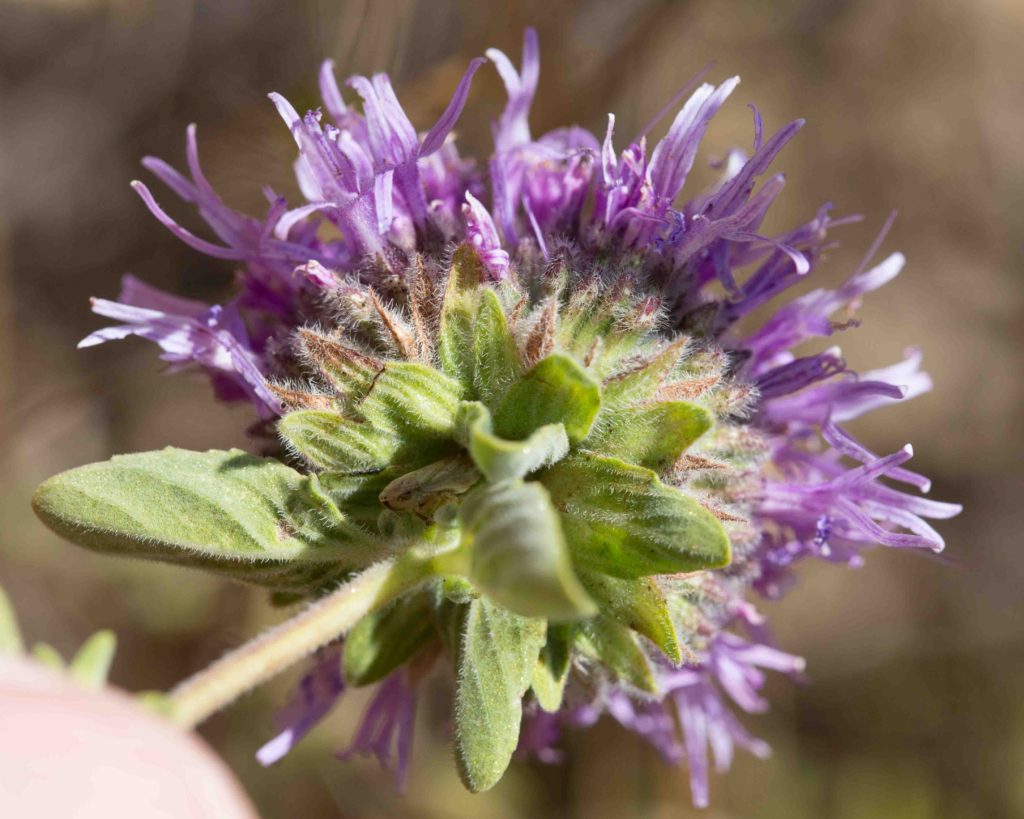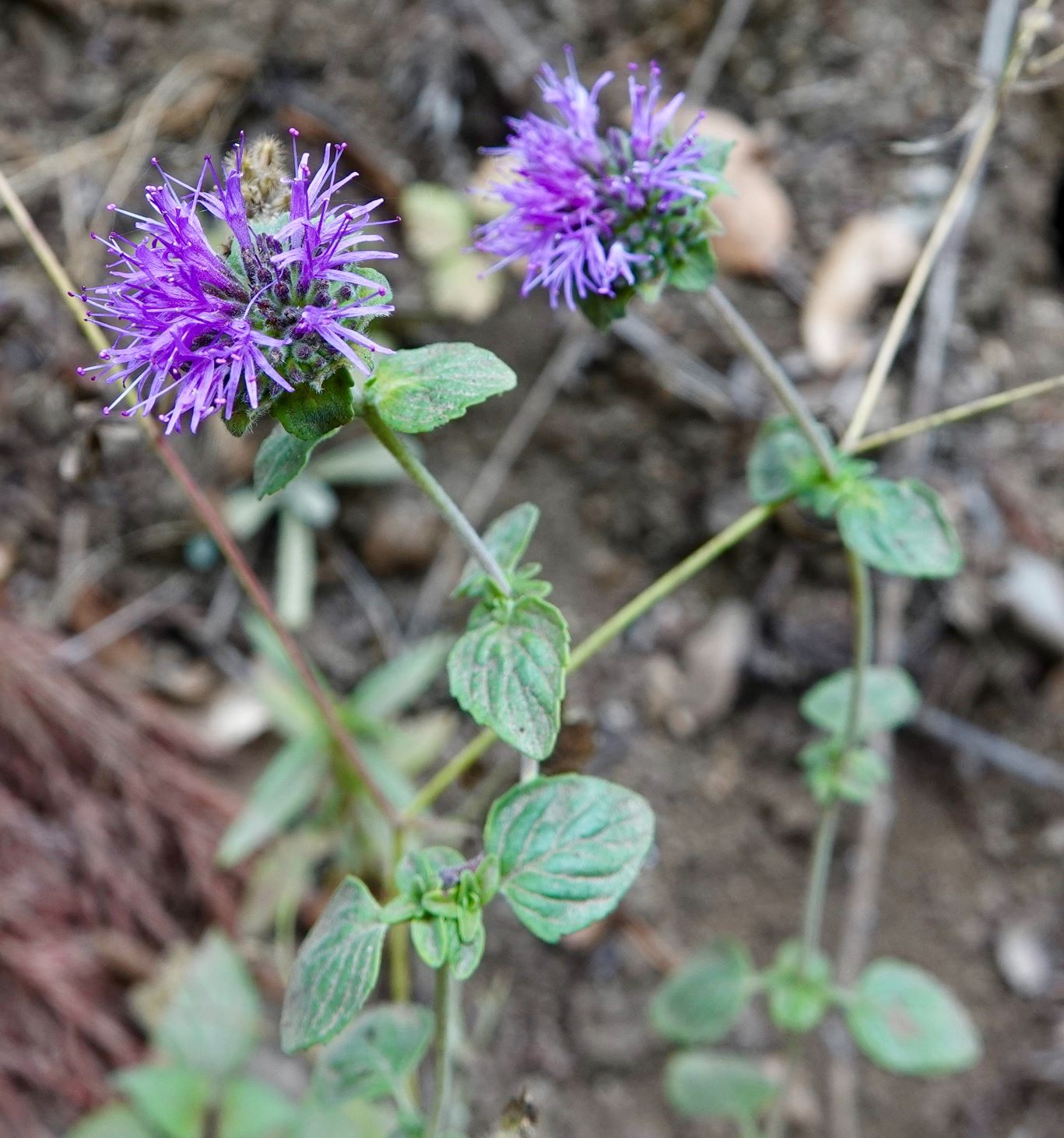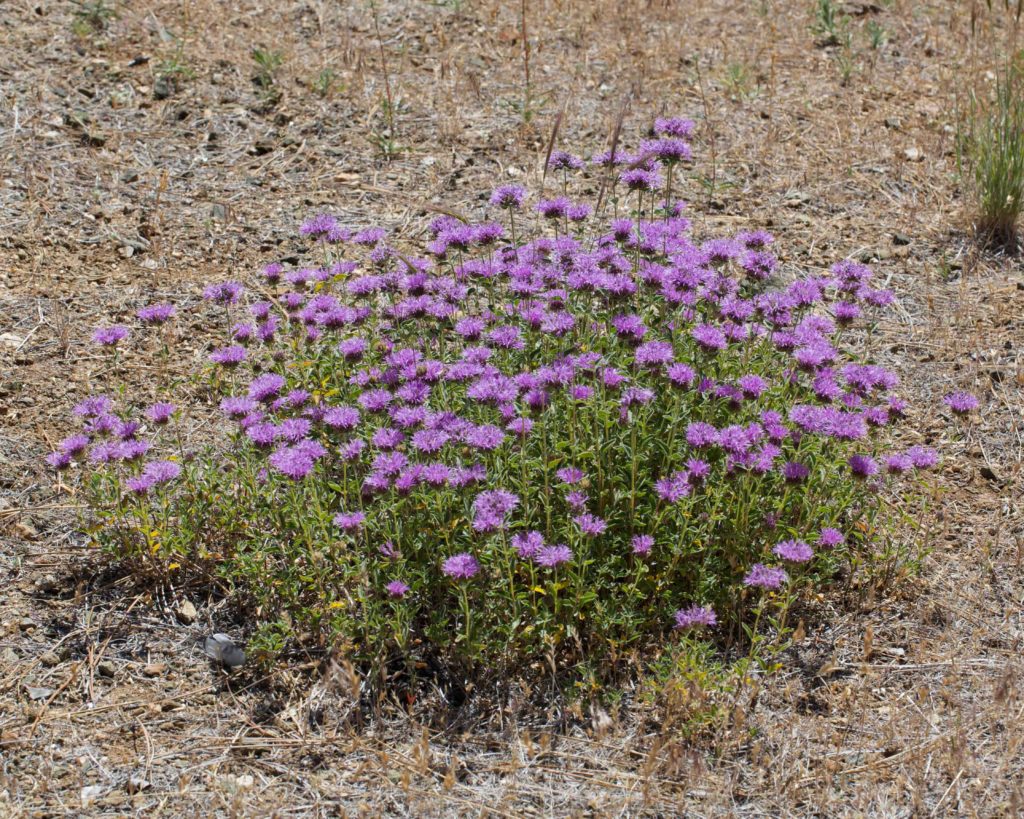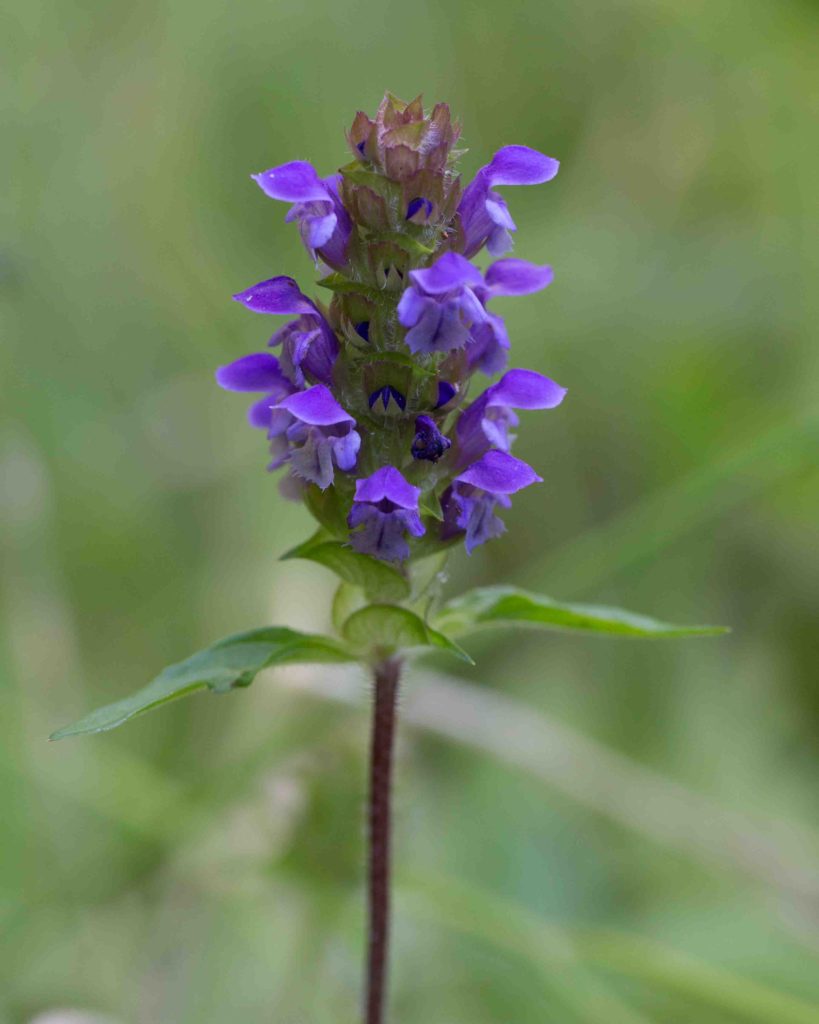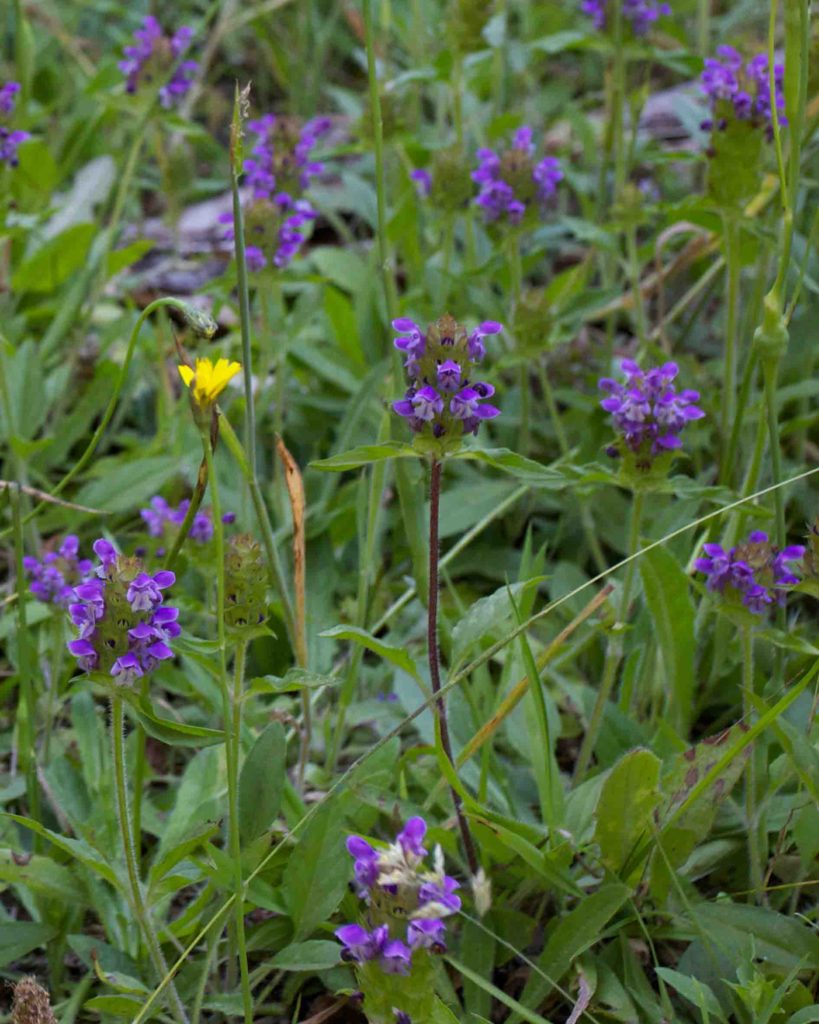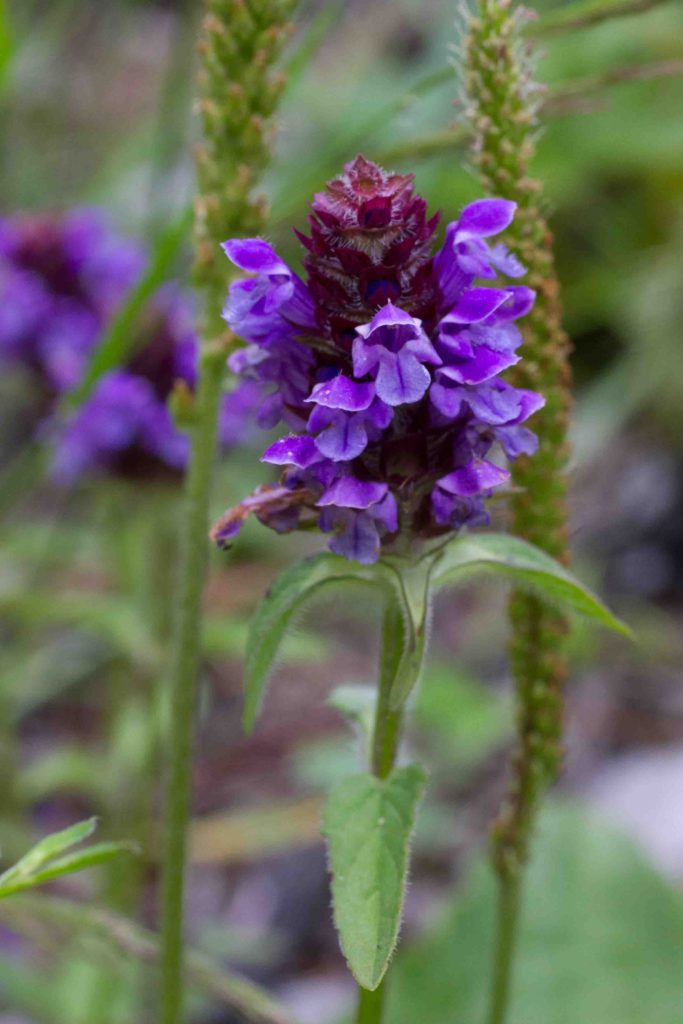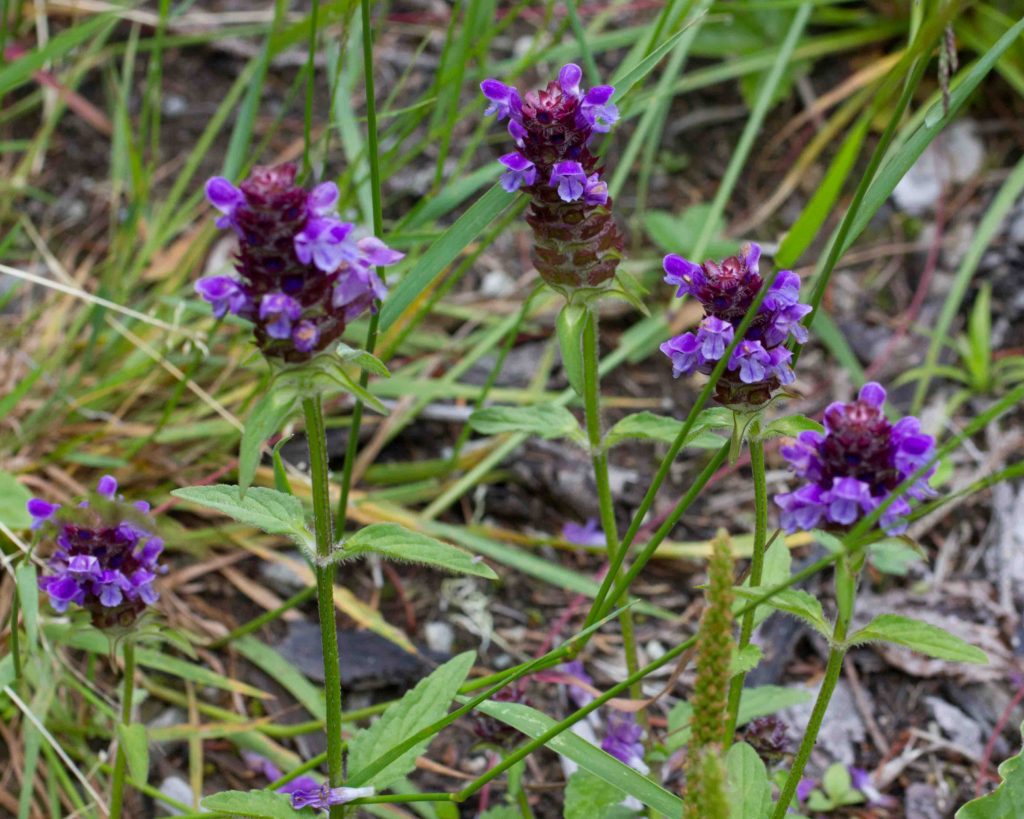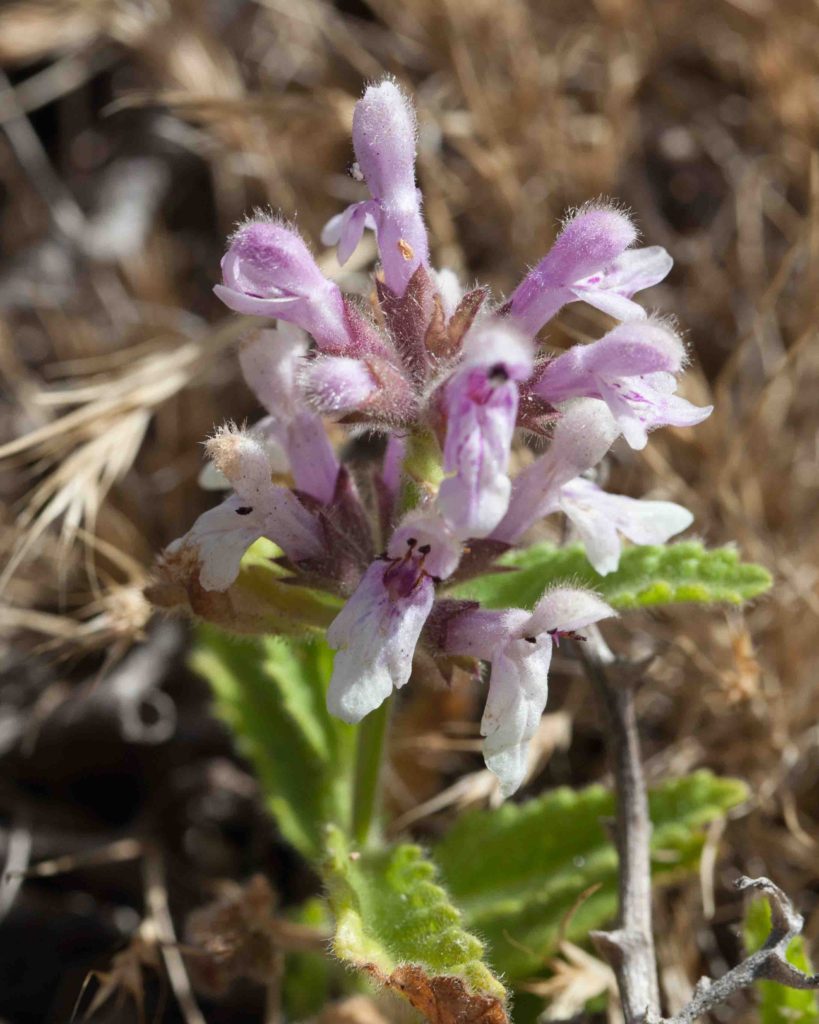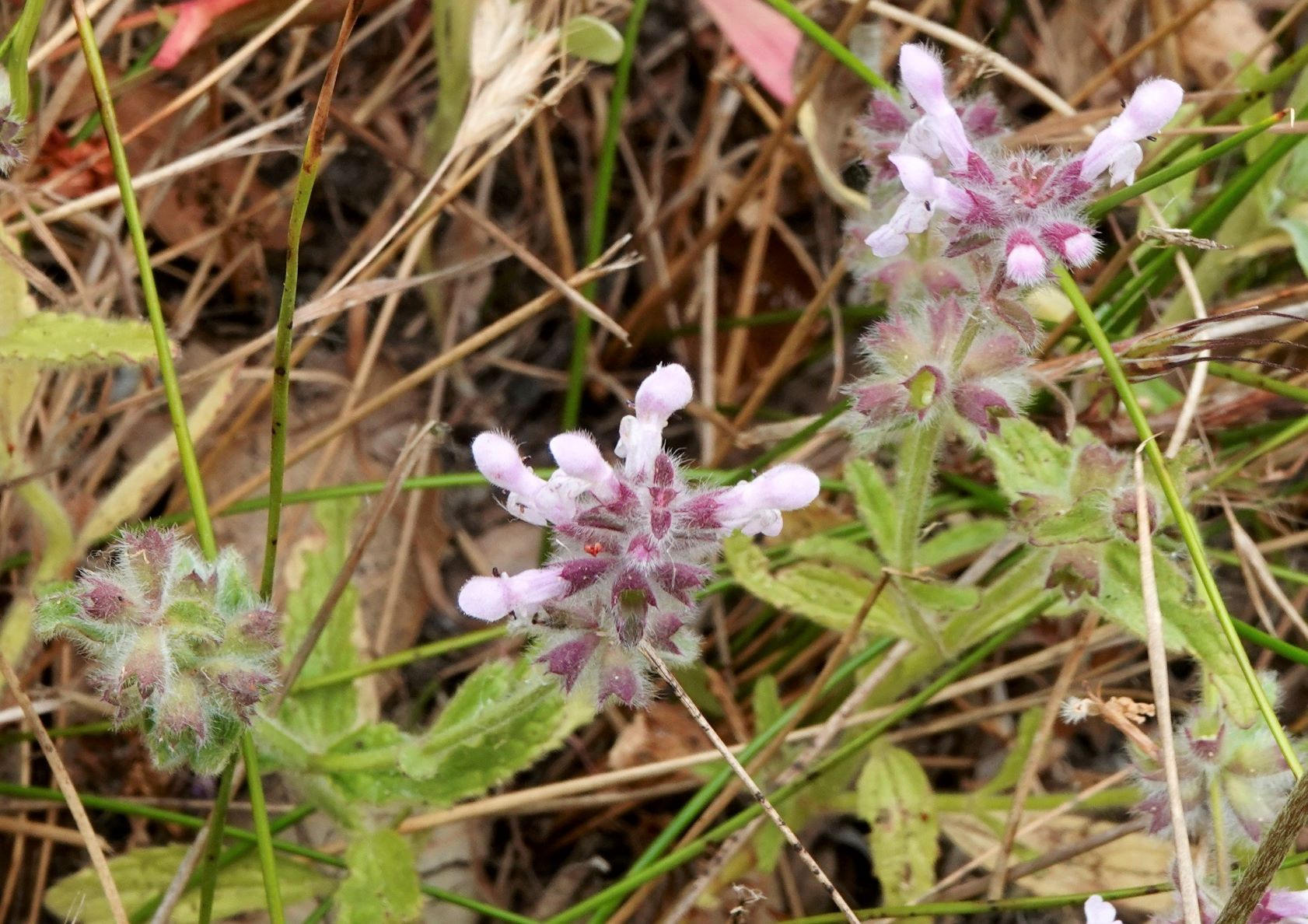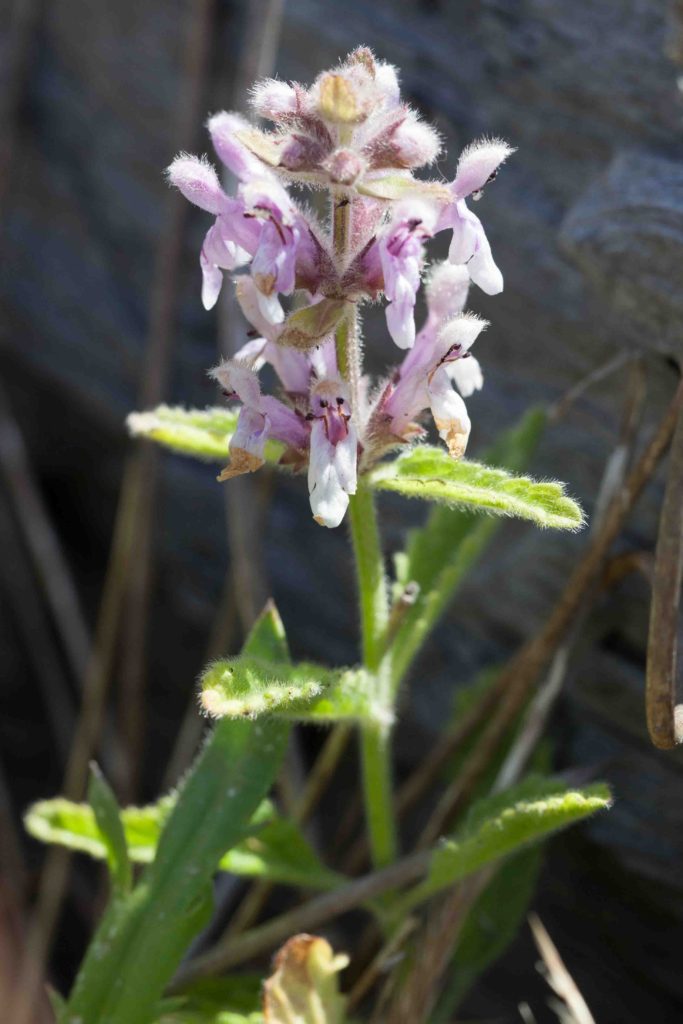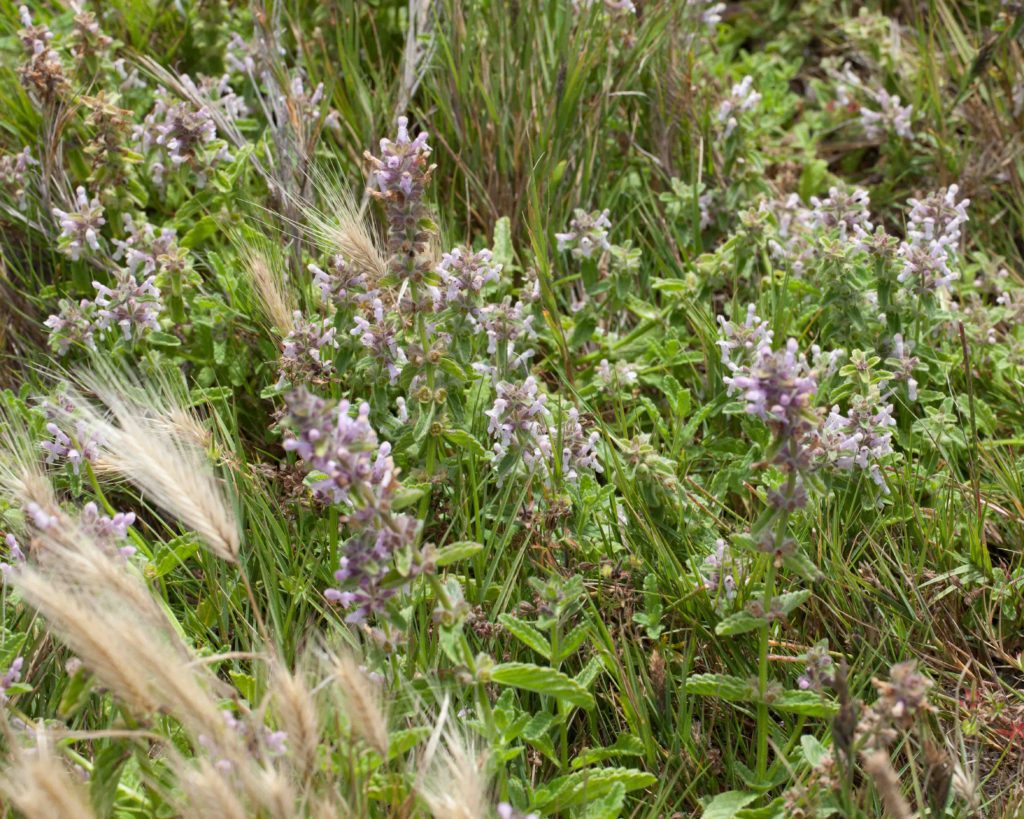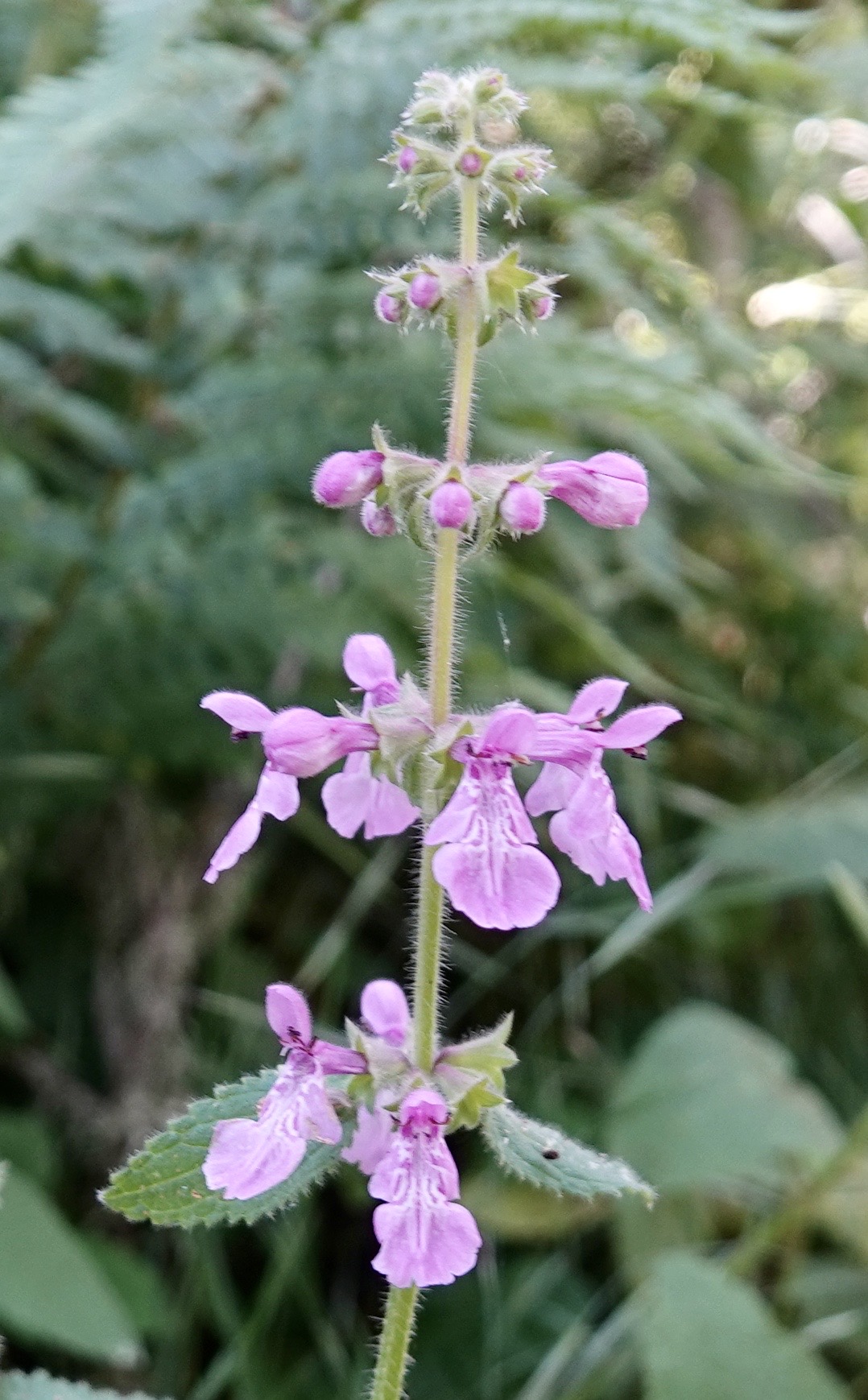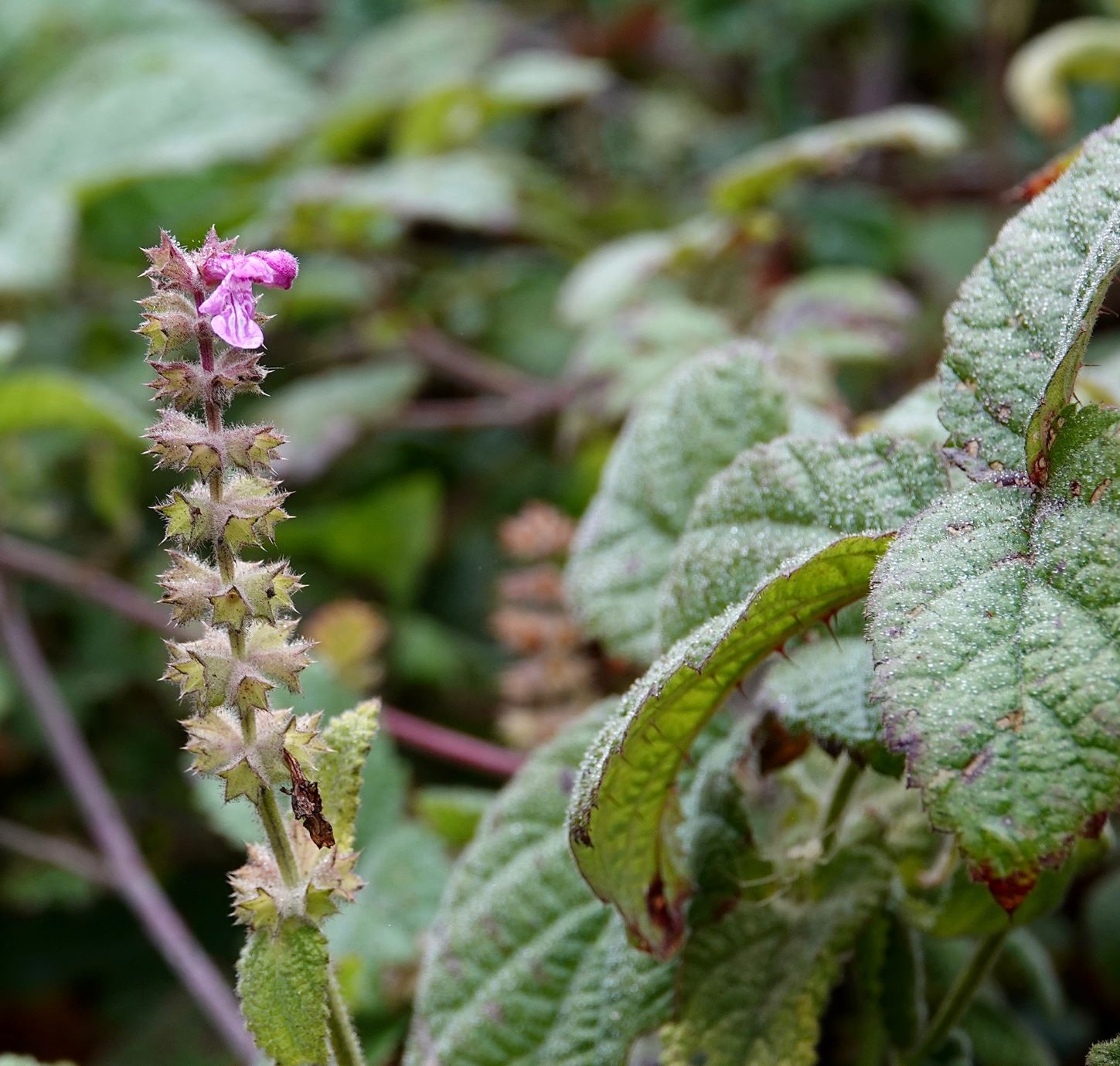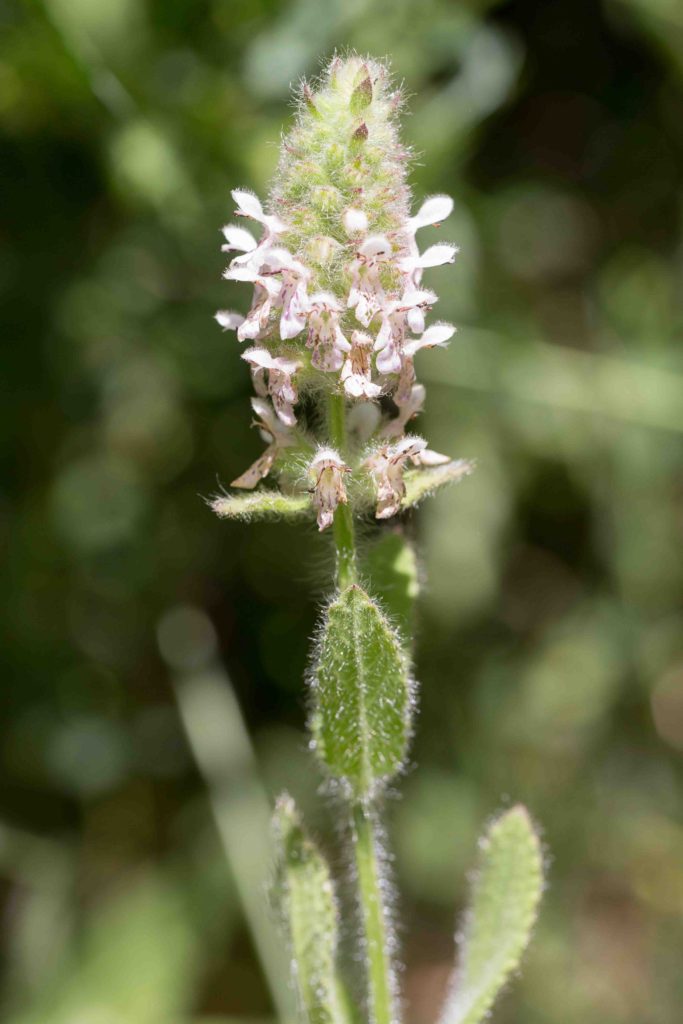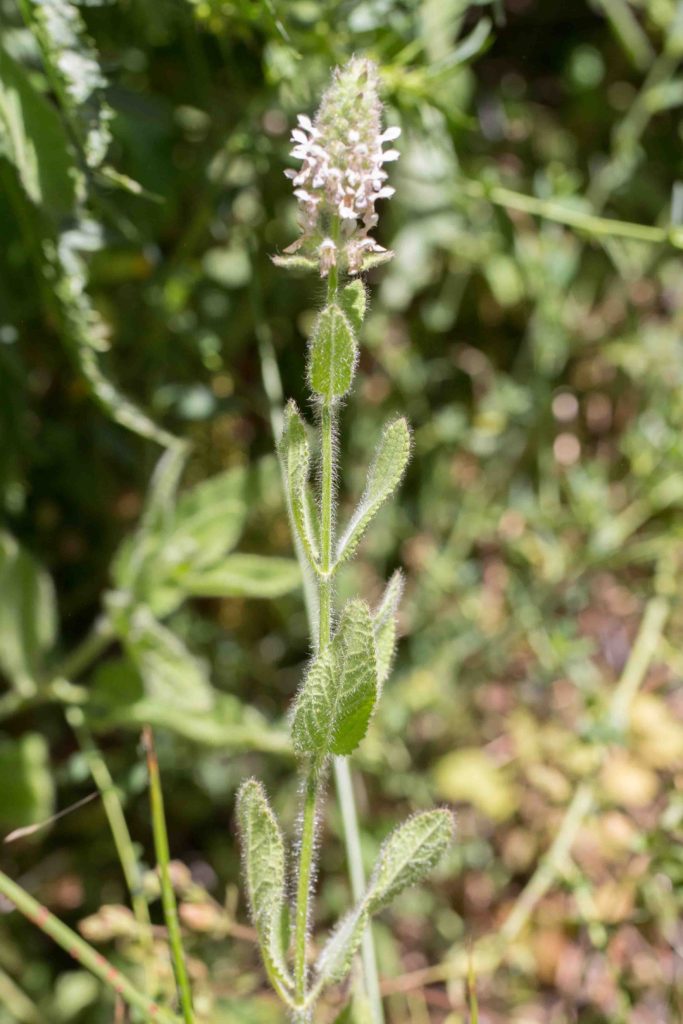Lamiaceae: Mint Family — Mints, Hedge-nettles & Horehound
Mint family members commonly have square stems, opposite leaves and a strong fragrance. This family includes not only the mints (Mentha) and sages (Salvia), but also many of the most common culinary herbs such as rosemary, marjoram and oregano.
Horehound – Marrubium vulgare
Blooms:
Mar–Nov
Plant Height:
20–60 cm
Flower Size:
Small cluster
Origin:
Europe
Invasive?
Yes – limited
Habitat:
Waste areas
Notes:
Horehound has whorls of small white flowers, and conspicuously wrinkled gray to greenish-gray ovate leaves. The plant is generally low-growing and spreading, but with one or two taller flowering stems. The calyx is unusual in being split into 10 hook-tipped, backward curving lobes. Photos #2 – 3 by CJH.
American Cornmint – Mentha canadensis
Blooms:
July–Oct
Plant Height:
10–50 cm
Flower Size:
Small cluster
Origin:
Native
Habitat:
Alongside or near water
Notes:
This is distinguished mainly by its leaves, which reduce in size as they ascend the stem. The leaves are aromatic, linear to lanceolate, serrated, tapered at the base, with an acute tip and short hairs below. Petioles are 5–25 mm long. Flowers are pale lilac to white, in whorled clusters at intervals up the stem.
Pennyroyal – Mentha pulegium
Blooms:
July–Oct
Plant Height:
10–30 cm
Flower Size:
Small cluster
Origin:
Europe
Invasive?
Yes – moderate
Habitat:
Low moist places
Notes:
The lavender to violet flowers are in small, dense clusters. Each cluster is subtended by reflexed, ovate to lance-linear, leaf-like bracts. Leaves are 5–25 mm long, aromatic, ovate to lanceolate, sometimes serrated, and reducing in size as they ascend the stem. Its essential oil has been used as an insect repellent, but is potentially fatal if ingested.
Coyote Mint – Monardella villosa subsp. villosa
Blooms:
May–Aug
Plant Height:
10–60 cm
Flower Size:
Medium
Origin:
Native
Habitat:
Open rocky or gravelly places
Notes:
A common plant, sometimes low and straggly, sometimes in a large bushy clump. The pink to purple flowers are generally in clusters of 1–6. Leaves are opposite and densely hairy. Although the leaves can be curled, this species can be distinguished from the rare Curly-leaved Monardella (Monardella sinuata subsp. nigrescens, not shown) by the absence of dark veins on the bracts subtending the flowers. Photo #3 by CJH.
Lanceleaf Self-heal – Prunella vulgaris var. lanceolata
Blooms:
May–Sept
Plant Height:
10–50 cm
Flower Size:
Small clusters
Origin:
Native
Habitat:
Coastal bluffs and shaded woodland
Notes:
This is similar to the more common Self-heal (var. vulgaris, see below), but the leaves are 3 times longer than wide, and the plant has a more erect growth habit. The pink-purple flowers have a paler and sometimes toothed lower lip. Bracts have marginal hairs.
Self-heal – Prunella vulgaris var. vulgaris
Blooms:
June–Sept
Plant Height:
10–50 cm
Flower Size:
Small clusters
Origin:
Europe
Habitat:
Lawn weed
Notes:
More common than the native Lanceleaf Self-heal (var. lanceolata, see above), this is a common lawn weed. The stem is prostrate, occasionally decumbent to erect. The blue-violet, 2-lipped flowers are clustered around a short spike. Leaves have a wedge-shaped base and are twice as long as they are wide.
Bugle Hedge-nettle – Stachys ajugoides
Blooms:
June–Sept
Plant Height:
60–100 cm
Flower Size:
Large clusters
Origin:
Native
Habitat:
Moist places
Notes:
This is similar in general appearance to the far more common Woodmint (Stachys bullata, see below). However, the stems that tend to be less erect, and it has much paler flowers, whitish to pale pink, with hairy calices. Flowers are in whorls of 3–6. Leaves are generally oblong with silky hairs, a wedge-shaped base and a rounded tip. Photo #2 by CJH.
Woodmint / California Hedge-nettle – Stachys bullata
Blooms:
Mar–Sept
Plant Height:
40–90 cm
Flower Size:
Large clusters
Origin:
Native
Habitat:
Dry slopes and canyons near coast; widespread
Notes:
Very common, this has a more or less erect stem with interrupted clusters of 6 whorled, rose-purple flowers. Leaves are opposite, ovate, slightly hairy and with scalloped-toothed margins. The plant has a distinct aroma, on which opinions are sharply divided. Photos by CJH.
Short-spiked Hedge-nettle – Stachys pycnantha
Blooms:
May–July
Plant Height:
30–100 cm
Flower Size:
Large clusters
Origin:
Native
Habitat:
Moist places, often on serpentine or in oak or pine forest
Notes:
This uncommon plant has a short, dense spike of flowers, white to pale pink in whorls of 8–12. Leaves are lanceolate with an obtuse tip. The plant is hairy and very aromatic.
